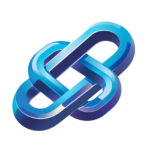
AI Driven Workforce Planning and Scheduling Solutions for Success
Discover AI-driven workforce planning and scheduling solutions that enhance talent acquisition optimize scheduling and improve performance management for businesses
Category: AI Business Tools
Industry: Human Resources
Intelligent Workforce Planning and Scheduling
1. Define Workforce Requirements
1.1 Analyze Business Needs
Conduct a thorough analysis of current and future business needs to determine the workforce requirements.
1.2 Utilize AI for Demand Forecasting
Implement AI-driven forecasting tools, such as IBM Watson Analytics or Microsoft Azure Machine Learning, to predict staffing needs based on historical data and market trends.
2. Talent Acquisition
2.1 Source Candidates
Use AI-powered recruitment platforms like HireVue or ZipRecruiter to streamline the sourcing process and identify suitable candidates.
2.2 Screen Resumes
Leverage AI tools such as Applicant Tracking Systems (ATS) with built-in AI capabilities to automate resume screening and shortlist qualified applicants.
3. Workforce Scheduling
3.1 Create Scheduling Algorithms
Develop AI algorithms that consider employee availability, skills, and preferences to generate optimal work schedules using tools like When I Work or Deputy.
3.2 Implement Predictive Scheduling
Utilize AI to analyze patterns in employee scheduling and demand, allowing for predictive scheduling that minimizes overtime and improves employee satisfaction.
4. Performance Management
4.1 Monitor Employee Performance
Integrate AI-driven performance management systems such as 15Five or Culture Amp to track employee performance metrics and provide real-time feedback.
4.2 Identify Training Needs
Use AI analytics to assess skills gaps and recommend targeted training programs through platforms like LinkedIn Learning or Coursera for Business.
5. Continuous Improvement
5.1 Collect Feedback
Implement AI tools to gather and analyze employee feedback on scheduling and performance management processes, using platforms like Qualtrics.
5.2 Refine Processes
Continuously refine workforce planning and scheduling processes based on data-driven insights and employee feedback to enhance operational efficiency.
6. Reporting and Analytics
6.1 Generate Reports
Utilize AI-driven business intelligence tools such as Tableau or Power BI to create comprehensive reports on workforce metrics and scheduling efficiency.
6.2 Analyze Data Trends
Conduct regular analyses of workforce data to identify trends and make informed decisions for future workforce planning.
Keyword: AI workforce planning solutions
